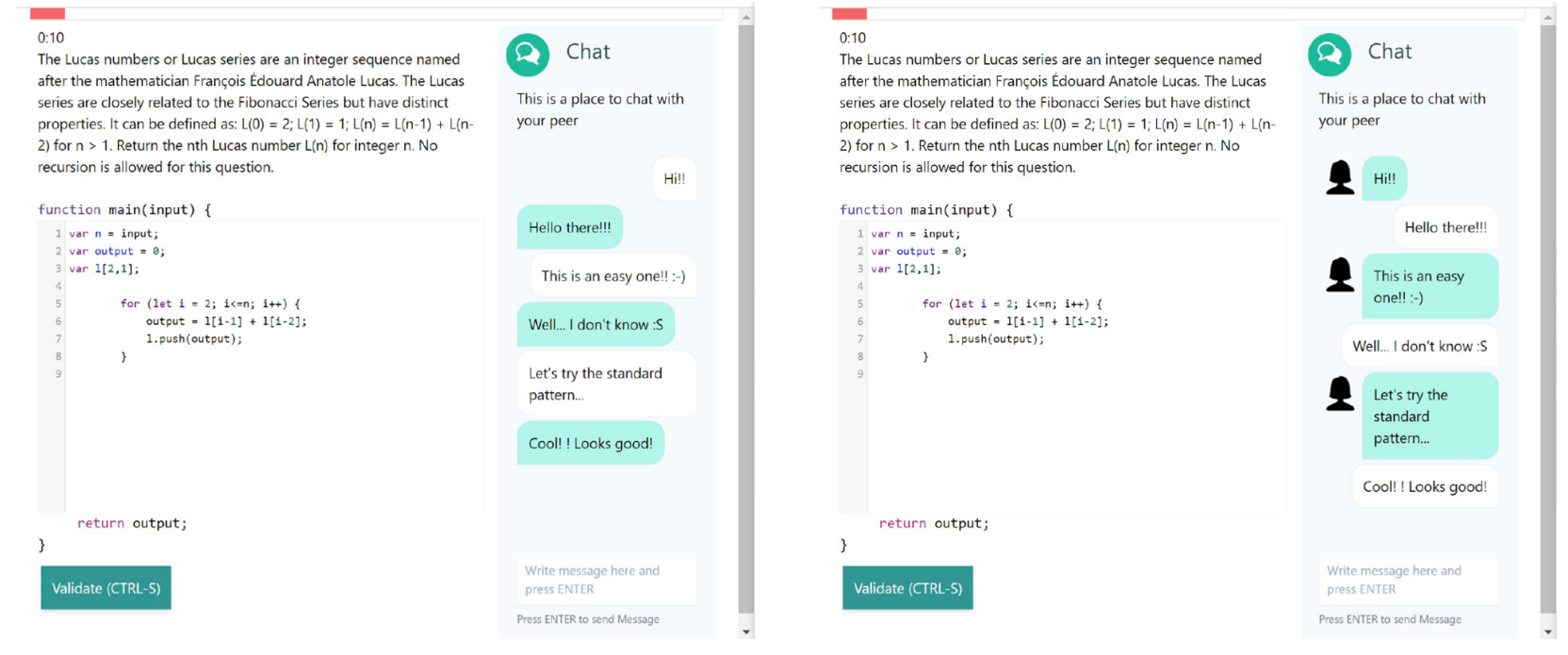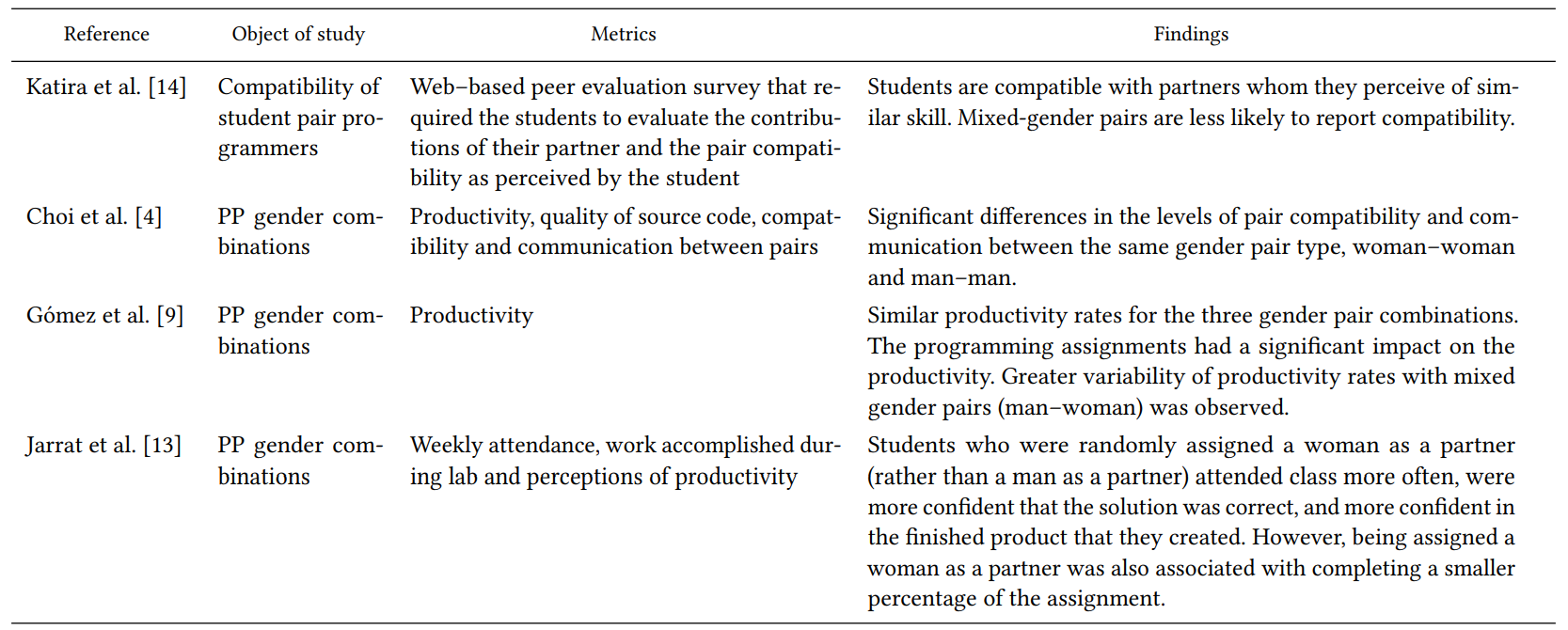and the distribution of digital products.
Examining Gender Bias in Pair Programming: Insights from Empirical Studies
5 Execution Plan and 5.1 Recruitment
5.2 Training and 5.3 Experiment Execution
Acknowledgments and References
1.2 Related WorkSeveral literature reviews [10, 15, 21] have compiled the empirical research on using pair programming in higher education, with [6] being focused on distributed pair programming from a teaching perspective. By means of controlled experiments, remote and co–located pair programming are compared in [1, 22], showing comparable results. In most of the cases, the analyzed variables are related to performance in terms of time, quality, or code tests passed. Students perceptions have been also analyzed in terms of confidence, satisfaction, motivation, or personality [20].
\ Table 1 summarizes the empirical studies on the influence of gender in pair programming, including findings such as (i) same– gender pairs are more “democratic”; (ii) women working in pairs were more confident than those working solo; and (iii) in mixedgender, pairing women particularly do not benefit [15]. Although
\

\

\ such studies reveal that gender seems to be a key factor in pair programming, none of them study gender bias in pair programming.
\ Many factors other than gender may affect the outcomes of remote programming sessions [2, 23]. Previous research on productive pairing looked at factors such as skill levels, autonomy in choosing one’s partner [25], and different personalities [11]. Nevertheless, the work on gender composition of pairs found conflicting results about whether same-gender or mixed-gender pairings are more effective [3, 4, 12, 16]. One possible explanation is that gender correlates with other dimensions that may affect the pairs’ collaboration, but these correlations may vary between different environments. For example, women in a class may, on average, have higher skill level than men because they had to face more societal barriers to enter the class. On the other hand, they may, on average, have lower skill level if women with no background are more actively recruited.
\
:::info Authors:
(1) Amador Durán, SCORE Lab, I3US Institute, Universidad de Sevilla, Sevilla, Spain ([email protected]);
(2) Pablo Fernández, SCORE Lab, I3US Institute, Universidad de Sevilla, Sevilla, Spain ([email protected]);
(3) Beatriz Bernárdez, I3US Institute, Universidad de Sevilla, Sevilla, Spain ([email protected]);
(4) Nathaniel Weinman, Computer Science Division, University of California, Berkeley, Berkeley, CA, USA ([email protected]);
(5) Aslı Akalın, Computer Science Division, University of California, Berkeley, Berkeley, CA, USA ([email protected]);
(6) Armando Fox, Computer Science Division, University of California, Berkeley, Berkeley, CA, USA ([email protected]).
:::
:::info This paper is available on arxiv under CC BY 4.0 DEED license.
:::
\
- Home
- About Us
- Write For Us / Submit Content
- Advertising And Affiliates
- Feeds And Syndication
- Contact Us
- Login
- Privacy
All Rights Reserved. Copyright , Central Coast Communications, Inc.